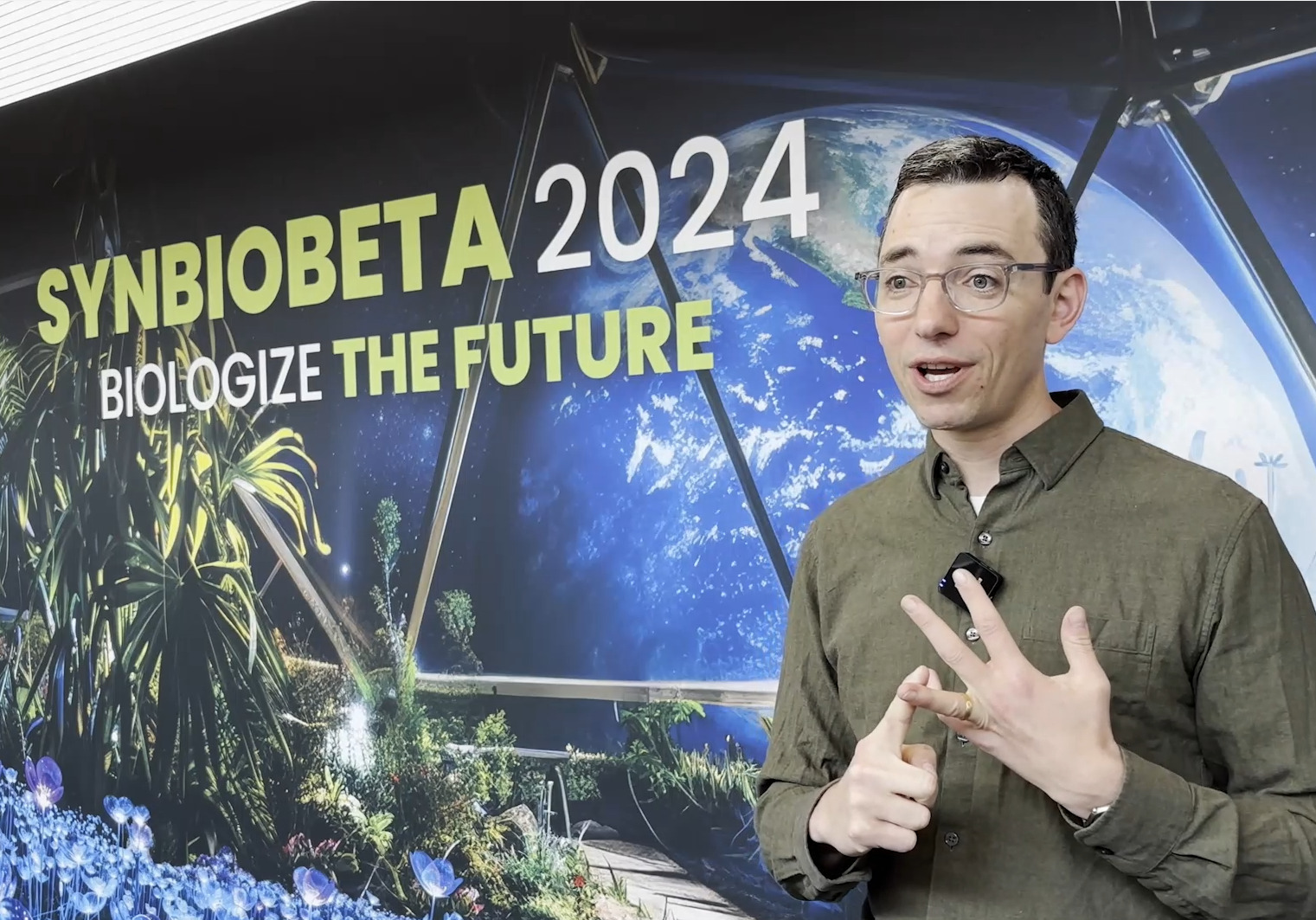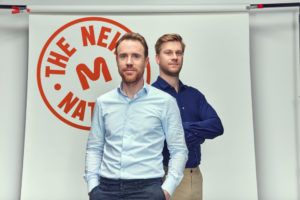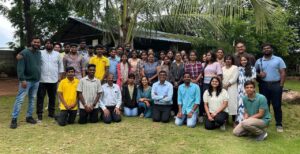Right now, a handful of microbial workhorses do the bulk of the work in biomanufacturing, which is billed as a more sustainable means of producing products currently derived from petrochemicals and industrialized animal agriculture. But do we need to domesticate a new generation of hosts to make the unit economics of precision fermentation stack up?
AgFunderNews caught up with Dr. Tim Wannier, cofounder and CEO at Cambridge, Mass-based startup Wild Microbes at the SynBioBeta conference in San Jose to find out how novel microbial hosts could unlock the potential of the bioeconomy.
In our conversation, we discussed…
The future of biomanufacturing:
Tim Wannier (TW): Today the bioeconomy runs on a handful of microorganisms; in future it will run on hundreds of microorganisms. And this will unlock the use of cheap, abundant feedstocks; improve process design; and make available biomanufacturing facilities that are unlike anything that we have built today. It will open up the funnel of available products to the space, and we are at the center of this, bringing in the microbes that will let us do it.
[Questions Wild Microbes is looking at include] what are the microbes that will enable us to shift away from glucose to industrial waste streams or side streams, or captured or recycled carbon dioxide? We need new microbial hosts that are designed to use these [feedstocks] as a base for carbon conversion and recycling.
[Novel microbial hosts can change the] economics of the [precision fermentation] process, whether that is through the use of extremophile microorganisms that can operate at different pressures, temperatures and pH levels [or through other means such as more efficient bioreactors]. We need to start [bioreactor] design with the [new] microorganism in mind. We think about the need for sterility as a challenge, for example, and so [with different host microbes, we could think about] moving away from those traditional beer fermentation tanks that were designed for one microorganism, and really change the process.
And then the third piece is the product landscape. That’s also a place where the naturally varied metabolisms of microorganisms are wildly underutilized. And so the opening up of that product landscape will involve [new host] microorganisms.
Domesticating wild microbes:
TW: There are large strain collections out there… but the real trick is moving from a collection of disparate microorganisms into a stable of [potential hosts] that are well-trained and ready to scale. It’s really that screening and domestication process that is the challenge.
Say you have a wild organism that you isolated from an environmental sample, say a saltwater marsh, and you take that microorganism and culture it in the lab. Then in what we call phase one, you need to figure out how to put new DNA in and make one modification to the genome. And that’s hard. It takes a lot of skill in microbiology. We harness a large library of component parts to make that as high-throughput and standardized as possible.
And then phase two is that once you can make one edit, how can you then go from a very low throughput technique, which is traditionally where a lot of microbiology labs have stopped, to be able to make billions of edits across a population of cells? And that’s where Wild Microbes has a unique perspective and has a technological piece that I brought out of working as a postdoc at the Church Lab at Harvard.
So we have an approach [recombineering] that relies on a set of very high throughput tools derived from bacteriophages and they allow us to make billions of changes across the population of cells. The goal is to get to library-scale engineering in wild hosts.
Recombineering:
TW: You might think of it as an analogous toolset to CRISPR/Cas9. I like to say that CRISPR/Cas9 is like a pair of scissors, and they need an endogenous DNA repair mechanism to impart your modification into the cell. But that’s not very well tolerated in bacteria as double-stranded breaks to the bacterial genome are lethal [to cells]. CRISPR/Cas9 actually works much better in eukaryotes, even though it’s originally sourced out of prokaryotes.
Recombineering works a little differently. It works more like a photocopier. So as bacteria are rapidly copying their genomes, recombineering allows us to slip edits into the new copy that’s being synthesized, so it’s a very well tolerated mechanism.
The business model at Wild Microbes:
TW: We’re most definitely not an ingredients company. We are positioning ourselves as a platform technology company and we would like to help enable as many companies as possible make that transition into the bioeconomy. The opportunity we see is that there have been many attempts that have failed or have been slowed down or been mired in very long five or 10 year periods of investment that haven’t panned out in the end.
Our goal is to is to decrease the failure rate of the transition, and we think that optimal host selection at the beginning of some of these projects will make the endpoint much more successful.
Right now we’re starting from a handful of fixed points, which are industrial microorganisms, and we want to change that so we’re starting from thousands of points. So we’ll scan through thousands of points to find the point that is closest to the highest possible peak on the landscape that we can easily access.
And that means that on average, we’ll have to do much less engineering of the microorganism and therefore the microorganism will be much closer to its native state and will be happier as it will experience less evolutionary tug away from its engineered state, and will achieve shorter engineering directories. It’ll be cheaper and will achieve better economics.
Wild hosts and IP:
TW: The nice thing about moving into a wild, newly isolated host microorganism, is that that patent landscape, the IP landscape, is open. And in many cases, we’ll be able to have broad rights and broad room to explore the production of a whole variety of different biomolecules and the optimization of different pathways that might be tied up in other organisms.
Progress to date:
TW: So far, we have one early partnership with a multinational company in the food ingredients space and another in contracting and another in late design phase. We’re onboarding partners right now and in late discussions with many more after that.
Funding:
TW: We concluded a pre-seed raise last year, we have taken some revenue, and this year we are raising a seed round.




